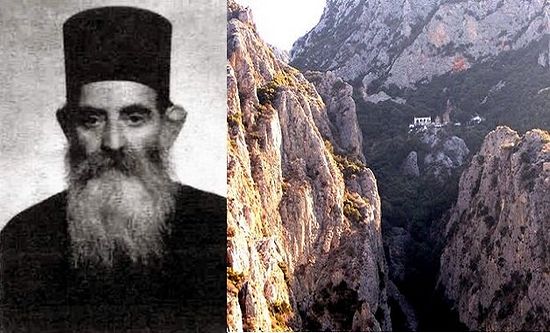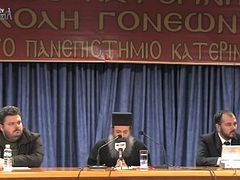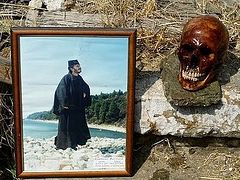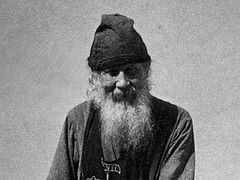Source: Pemptousia
January 15, 2016
He was originally from Athens and came to the Holy Monastery of Iviron first at the age of 18. Dissatisfied with the idiorrhythmic life, he moved to the Holy Skete of Saint Ann’s and from there to Katounakia, to live with the virtuous spiritual guide Papa Daniïl, where he also learned the art of wood-carving.
From the beginning of the 20th century, he was already proficient in the prayer of the heart and vigilance. But because of this, he rejected anything that was not conducive to obedience, submission and the other practical virtues and used to say that vigilance was a gift from God and that, just as God first made people and then breathed their living souls into them, so a monk should first purify himself bodily through the practical virtues and then he will receive from God the gift of prayer of the heart and vigilance proceeding, like the Niptic Fathers from practice to the support of contemplation.
He was not fortunate enough to enjoy a systematic education, but he was extremely studious, and, with a very sharp mind, was able to delve into the more profound concepts of the Scriptures and provide the most correct solutions to questions.
When, in 1913 the heresy of the “worshippers of the name”[1] arose among the Russian and Romanian monks on the Holy Mountain, concerning the name of Jesus, he was the first to go to the Holy Community and point out the unsound and unorthodox nature of the theory, pointing our most appositely that “they’ve left the head and are worshiping the hat”.
The timely intervention of this blessed man and the insistence of the Holy Community on Orthodox views prevented other monks from becoming involved, especially those who were Greek, and so this dreadful upheaval was restricted to the Russians, of whom those who persisted in this senseless heresy, by common consent of the Ecumenical Patriarchate and the Russian Church, were taken away on a special ship and confined to the Caucasus. Thus, peace was re-established in this holy place and it was relieved of about 1/3 of its population of Russian monks.
The blessed monk lived for some 55 years in the desert dwelling of Saint Yerasimos the Younger and entered upon the sleep of the just there at the age of 77, in the year of our Lord 1930. It was through him that Yerasimos Manayias from Kefalonia, a graduate of the University of Zurich, became a monk.
* * *
Source: Archimandrite Gavriïl Dionysiatis († 1983), Λαυσαϊκόν του Αγίου Όρους, (Lausaikon of Holy Mountain) 2nd ed. Holy Mountain 2002.




